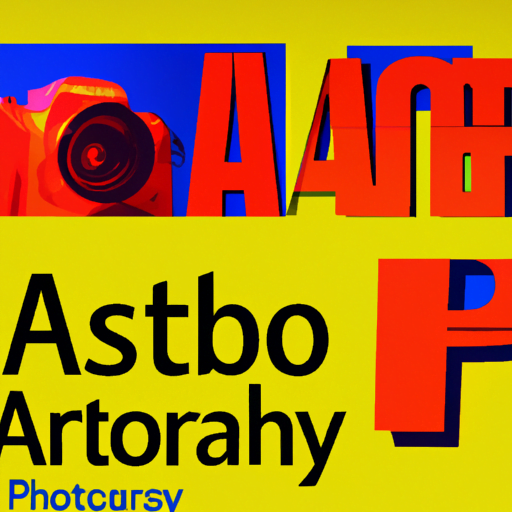
-
Table of Contents
- The Role of Typography in Sports Graphics
- The Power of Typography
- Creating a Visual Identity
- Creating Hierarchy and Emphasizing Information
- Legibility and Readability
- Case Studies: Typography in Sports Graphics
- 1. FIFA World Cup
- 2. NBA Finals
- 3. Olympic Games
- The Future of Typography in Sports Graphics
- Summary
The Role of Typography in Sports Graphics

Sports graphics play a crucial role in capturing the attention of viewers and conveying important information. From television broadcasts to social media posts, typography is a key element in creating visually appealing and effective sports graphics. In this article, we will explore the role of typography in sports graphics and how it can enhance the overall viewer experience.
The Power of Typography
Typography is the art and technique of arranging type to make written language legible, readable, and visually appealing. It involves selecting the right typefaces, fonts, sizes, spacing, and layout to convey a specific message or evoke a particular emotion. In the context of sports graphics, typography plays a vital role in capturing the essence of the sport, team, or event.
Typography in sports graphics can be seen in various forms, including team logos, player names and numbers, headlines, captions, and statistics. It helps to establish a visual identity, create hierarchy, and guide the viewer’s attention to the most important information.
Creating a Visual Identity
Typography is a powerful tool for creating a visual identity for sports teams and events. A well-designed logo with a unique and memorable typeface can instantly convey the spirit and personality of a team. For example, the bold and aggressive typography used in the logo of the NFL’s Seattle Seahawks reflects the team’s fierce and competitive nature.
Similarly, typography can be used to establish a consistent visual identity across various sports graphics. By using the same typefaces, fonts, and styles, teams and events can create a cohesive and recognizable brand. This helps to build a strong connection with fans and enhances the overall fan experience.
Creating Hierarchy and Emphasizing Information
In sports graphics, there is often a need to convey a large amount of information in a limited space. Typography helps to create hierarchy and guide the viewer’s attention to the most important information. By using different font sizes, weights, and styles, designers can emphasize key details such as player names, scores, and statistics.
For example, in a basketball game graphic, the player’s name and number are often displayed prominently to help viewers identify the players quickly. The use of bold and large typography for the player’s name ensures that it stands out and is easily readable even from a distance.
Typography can also be used to convey the excitement and energy of a sports event. Bold and dynamic typefaces can evoke a sense of action and movement, while elegant and sophisticated fonts can create a sense of prestige and tradition. The choice of typography should align with the overall tone and atmosphere of the sport or event.
Legibility and Readability
One of the primary goals of typography in sports graphics is to ensure legibility and readability. Sports graphics are often viewed in fast-paced environments, such as stadiums or on television screens during live broadcasts. Therefore, it is essential to use typefaces and fonts that are easily readable even from a distance or at a quick glance.
When selecting typefaces for sports graphics, designers should consider factors such as letter spacing, line height, and font weight. Sans-serif typefaces are commonly used in sports graphics due to their clean and modern appearance. They are also more legible at smaller sizes and on screens with lower resolutions.
Additionally, designers should pay attention to the contrast between the text and the background. High contrast ensures that the text stands out and is easily readable. For example, white text on a dark background or vice versa can provide excellent legibility, especially in low-light conditions.
Case Studies: Typography in Sports Graphics
Let’s take a look at some real-world examples of how typography has been effectively used in sports graphics:
1. FIFA World Cup
The FIFA World Cup is one of the most-watched sporting events globally, and its graphics play a crucial role in capturing the excitement and spirit of the tournament. The typography used in the World Cup graphics is often bold, dynamic, and reflects the cultural heritage of the host country. For example, the typography used in the 2018 World Cup held in Russia incorporated elements of Cyrillic script, creating a unique and visually appealing design.
2. NBA Finals
The NBA Finals is the pinnacle of professional basketball, and its graphics are designed to convey the intensity and drama of the championship series. The typography used in NBA Finals graphics is often bold, with strong and angular letterforms. The use of metallic effects and three-dimensional rendering adds a sense of depth and excitement to the typography.
3. Olympic Games
The Olympic Games bring together athletes from around the world, and its graphics aim to represent the unity and diversity of the participating nations. The typography used in Olympic Games graphics is often elegant, with classic and timeless typefaces. The use of national flags and colors in the typography helps to create a sense of national pride and identity.
The Future of Typography in Sports Graphics
As technology continues to advance, the role of typography in sports graphics is likely to evolve. With the rise of virtual and augmented reality, typography can be integrated into immersive experiences, allowing viewers to interact with sports graphics in new and exciting ways.
Furthermore, personalization and customization are becoming increasingly important in sports graphics. Fans want to feel a sense of ownership and connection with their favorite teams and players. Typography can play a role in creating personalized graphics, such as jerseys with customized names and numbers, or social media posts with personalized messages.
Summary
Typography plays a vital role in sports graphics by creating a visual identity, establishing hierarchy, and enhancing legibility and readability. It helps to capture the essence of the sport, team, or event and creates a cohesive and recognizable brand. Through case studies, we have seen how typography has been effectively used in sports graphics, such as the FIFA World Cup, NBA Finals, and Olympic Games. As technology advances, the future of typography in sports graphics holds exciting possibilities for immersive experiences and personalized content. By understanding the power of typography, designers can create visually appealing and effective sports graphics that enhance the overall viewer experience.
